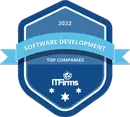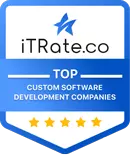Automating a Doping Control System Storing 2.5 Billion Records
An international provider of drug testing services partnered with Altoros to migrate its system for doping control officers to a new technology stack, while automating the creation of changing check-up workflows.
Description
Brief results of the collaboration:
- The team revamped the old architecture and fixed critical flaws hampering maintenance and stability.
- With an integrated no-code workflow builder, it is possible now to create custom drug testing processes for new sporting events without involving developers.
- The customer successfully migrated 2.5 billion documents and 10+ tournament workflows.
- Restructuring data enabled doping control officers to search athletes information based on various criteria, thus generating comprehensive reports.
- The sensitive athlete and drug testing information is secured from potential threats through implemented end-to-end encryption and compliance with GDPR.
The customer
The company is a US-based provider of antidoping solutions for sports organizations. Working directly with laboratories, the customer collects 80,000+ drug specimens each year, helping to digitize and store the results.
The need
The company offered a paperless management system to collect and administer drug test results. Originally built with RubyMotion, the iPad app was utilized for over a decade, but ceased to function after the release of a new iOS version. The system also struggled to adapt to changing workflows for each new sporting event, requiring extra time and developer interventions.
To address these issues, the customer aimed to migrate the app to a new technology stack and turned to Altoros for .NET and mobile engineering expertise, emphasizing the ease of maintenance.
The challenges
The team had to address the following issues:
- Data migration required seamless transfer from the old system to the new one while keeping the legacy app functional.
- Each development phase had tight deadlines linked to upcoming sporting events.
- As the Internet on stadiums is often unstable, the team had to consider the offline mode.
- To safeguard athletes’ data, it was crucial to prioritize security and GDPR compliance.
The solution
Stage 1. Altoros worked closely with the customer to set a detailed migration plan aligned with sports events. Urgently, the engineering efforts started with resuming the current app’s operability. To meet strict deadlines, the discovery phases of the subsequent migration milestones were conducted in parallel with the ongoing development.
Stage 2. The team revamped the old architecture and fixed critical flaws hampering maintenance —e.g., incorporated command-query separation.
Stage 3. In the web, the engineers built a no-code workflow engine, eliminating the need for developer interventions required previously to customize new tournament processes.
Stage 4. Athletes’ data collection/verification was reproduced in a new tablet app for doping control officers working onsite. E.g., athletes confirm and sign their analysis results scanned via a barcode.
Stage 5. Migration from CouchDB to MS SQL helped to structure data, enabling more detailed reports and easier search. The engineers also aligned 10+ SQL queries with coding conventions.
Stage 6. To address unstable Internet on stadiums, the team built a framework for detecting data sync issues and fixing them on the go.
Stage 7. The team enhanced security through end-to-end encryption and introduced other data protection practices to comply with GDPR.
Stage 8. The engineers covered the system with unit tests and established a long-term support plan, delivering a set of performance and stability insights regarding caching, load-balancing, etc.
2.5B
stored
documents
10+
tournament
workflows
10+
fixed reporting
queries
The outcome
Relying on Altoros, the customer successfully migrated its system to a new technology stack, eliminating maintenance issues and automating doping control workflows. Today, the company saves thousands of dollars and dozens of hours by enabling nontechnical staff to create custom doping control processes for new sports events without coding. Having migrated 2.5 billion documents and 10+ tournament workflows, doping control officers can search athletes information based on various criteria, generating detailed reports now—due to the structured nature of the new data storage.
Platform
AWS
Programming languages
C#, TypeScript
Frameworks and tools
.NET Framework, .NET Core, Entity Framework, Docker, React, Vite, Node.js, ESLint, StyleLint, Prettier, Amazon CloudFront, AWS CodeBuild, AWS CodeDeploy, AWS CodePipeline, Amazon S3, NUnit
Databases
MS SQL, Amazon RDS
Seeking a solution like this?
Contact us and get a quote within 24 hours


























